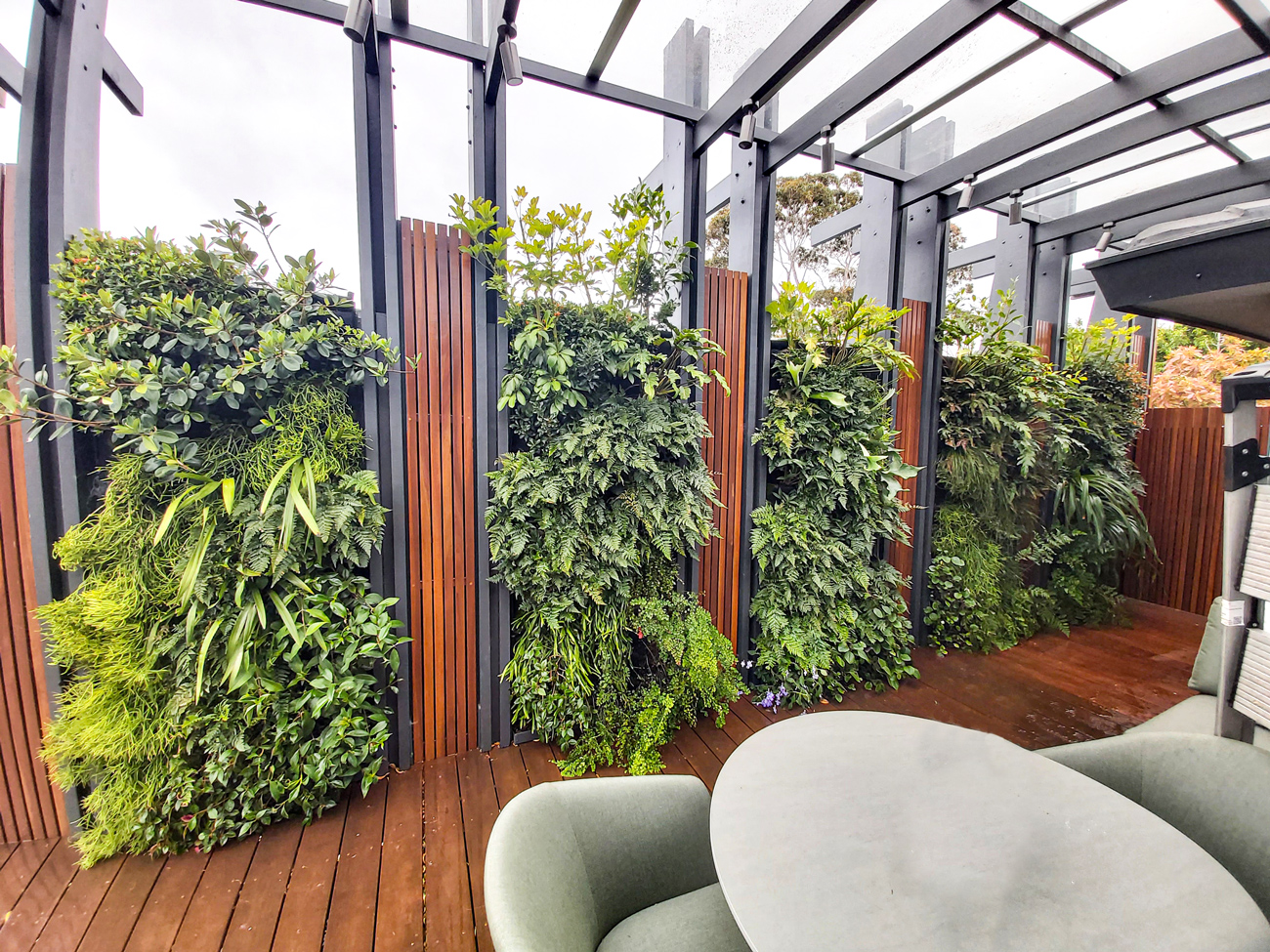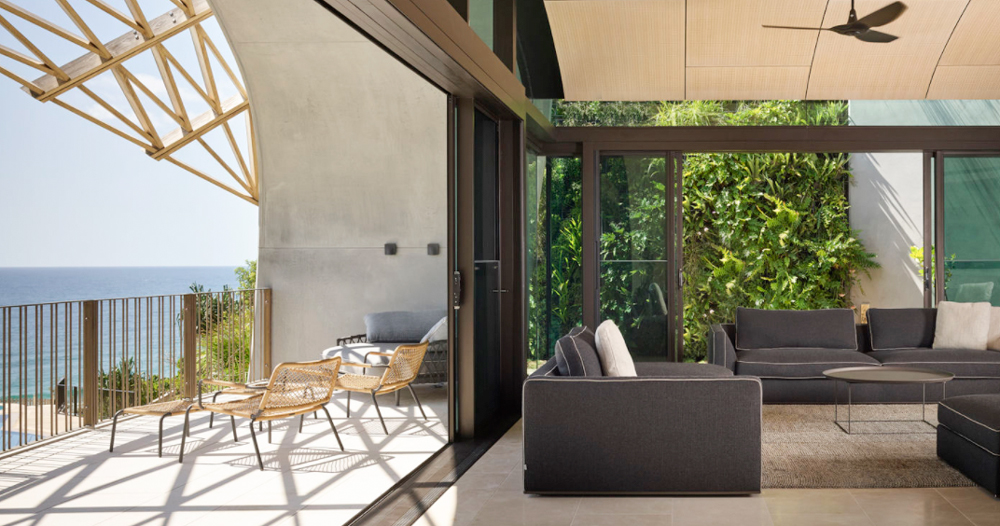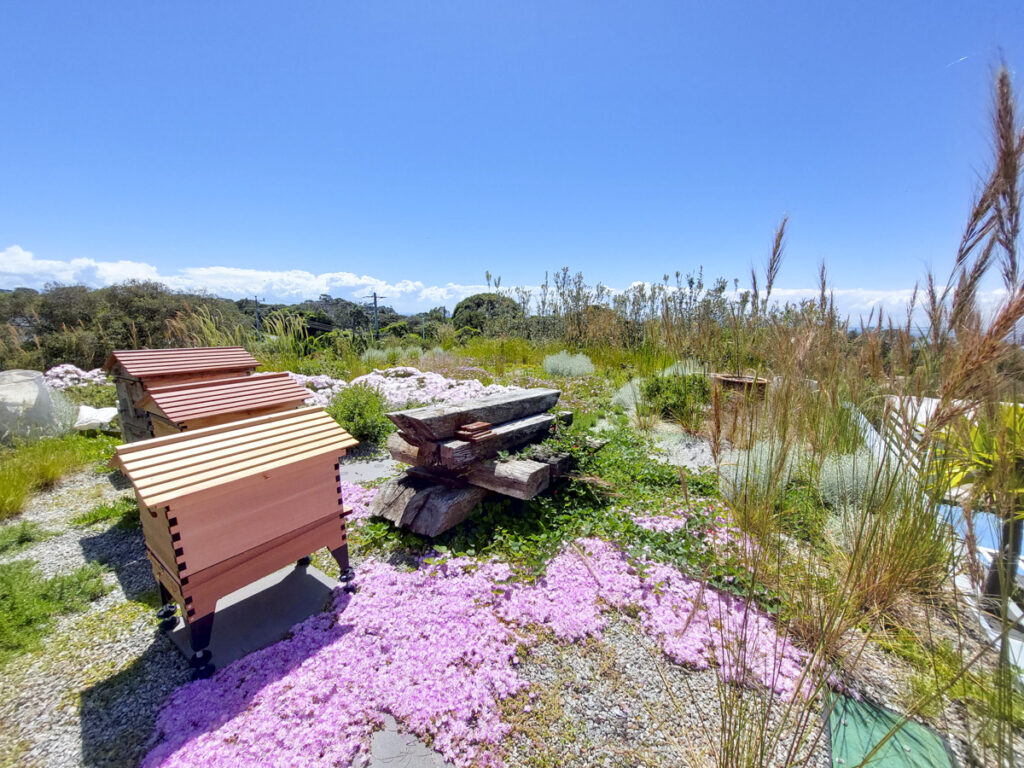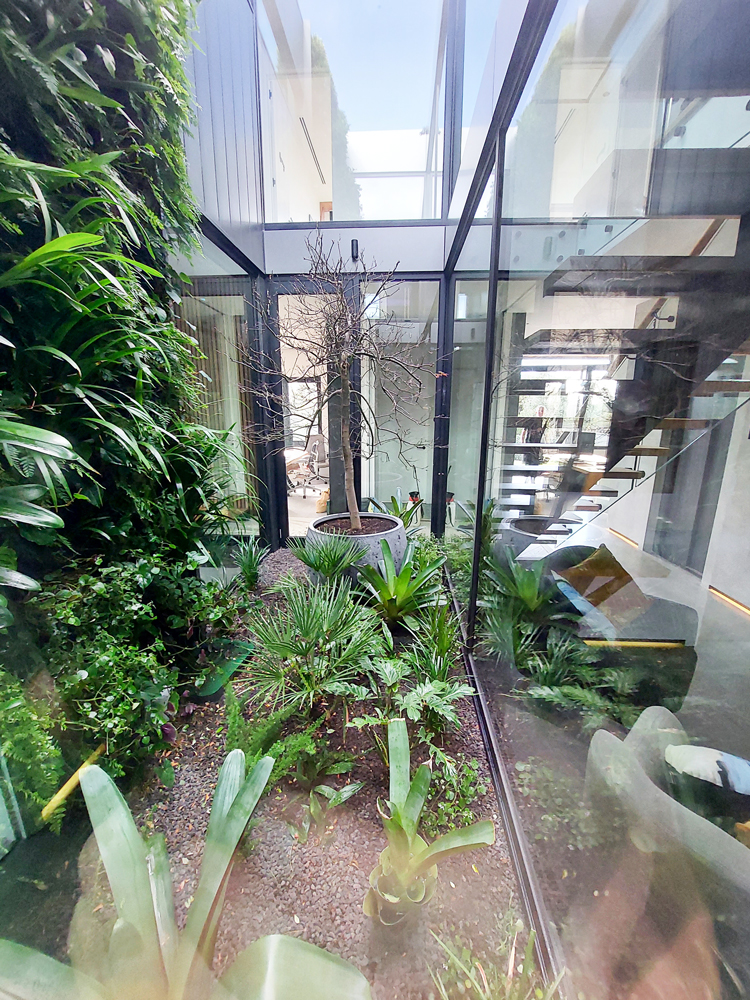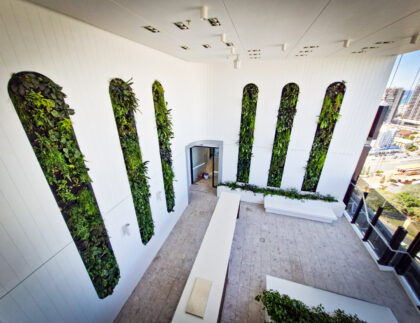
A WORD FROM FYTOGREEN's
IN-HOUSE BOTANIST
"Erik van Zuilekom"
Within this blog, we will explore the in-depth requirements and expertise necessary to provide sustainable greening for 2020 and beyond.
Follow Erik on Instagram –
United Natures Design
If you have a specific topic your would like covered by Erik or have any comments, please email lisa@fytogreen.com.au
The Fytogreen Approach to Residential Living Architecture
Integrating nature into our homes is more than an aesthetic choice; it is a fundamental investment in the quality of the living environment and the performance of the building itself. In the residential sphere, where personal sanctuary and architectural integrity are priorities, the application of living systems has become a key component of high-performance design. For homeowners, architects, and designers, the question is no longer if we should integrate nature, but how to do so with direct benefits of beauty, resilience, and long-term ecological function.
Fytogreen has built its reputation on delivering large-scale commercial living architecture.
This background, developed on demanding public and corporate projects, has provided us with a specific level of expertise, precision, and innovation. We also apply this specialised knowledge to the residential market, offering not just green infrastructure, but engineered, ecologically-informed systems designed for longevity. This approach is a departure from the world of off-the-shelf products; it is an investment in a living asset that enhances both property and wellbeing.
This article explores the foundational principles that distinguish a Fytogreen residential system, from the science of our lightweight media to the art of our ecological and botanical design, providing a clear insight into why our approach delivers durable, high-quality outcomes that yield returns on every level: ecological, financial, and personal.
Engineered for Life: The Technical Foundation of Fytogreen Systems
The long-term success of any living architecture installation is determined by the quality of its underlying technology. A system that overlooks the complex interplay of weight, water, nutrients, root biology, ecological expansion and succession, will invariably underperform.
Fytogreens systems are founded on decades of research and development, resulting in a technical framework that manifests in every component.
The Science of Lightweight Performance
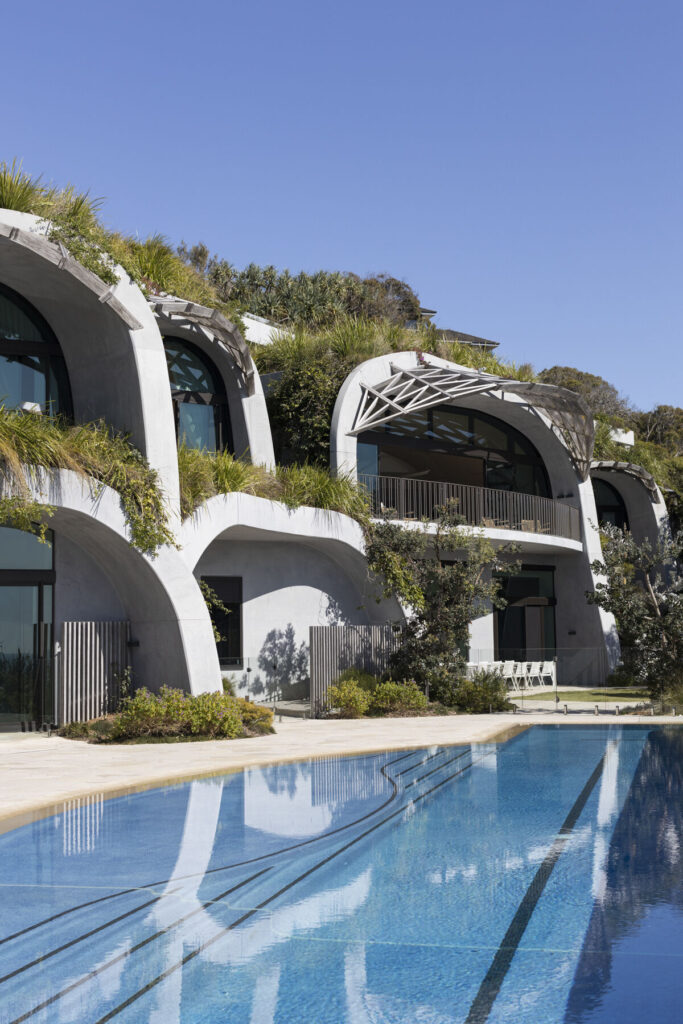
A common misconception is that lightweight systems are inherently less capable. In reality, effective engineering achieves lightweight performance without compromising structural integrity.
The key lies in the distinction between terrestrial soils, conventional organic soils/potting media and our engineered media. Traditional garden soil is a dense and unstable medium, prone to compaction and decomposition, which leads to slumping, reduced aeration, and a loss of structural integrity over time.
In contrast, Fytogreen’s engineered growing media is a precisely formulated, mineral-based substrate. It is designed to be structurally stable, porous, and significantly lighter than soil, even at full saturation. This is not simply about reducing the load on a building’s structure; it is about creating an optimal root-zone environment over the long term. Our media provides ideal air-filled porosity, facilitates excellent drainage to prevent root rot, and maintains a consistent structure that supports healthy plant development for decades.
This scientific approach allows us to create extensive gardens on structures where the weight of traditional soil would be prohibitive and organic media too short-lived and expensive to replace.
Resilience by Design
Fytogreen systems are designed for permanence. Their long-term resilience stems from the integration of specialised components: dynamic and resilient ecologies, stable engineered media, high-capacity drainage components, protective geotextile fabrics, and water-retention mats. Together, they create a self-contained ecosystem that resists the degradation common in lesser systems. Where organic soils break down and require replenishment, our engineered substrates remain consistent.
Stable substrates allow for long-term plantings to thrive and evolve into functional ecologies and safe havens as functional habitats, within a built environment dominated by disturbance, disruption and degradation of living systems. Stable substrates are provided with sufficient time to become living soils, hosting exceptionally diverse ecosystems that regulate plant growth and ecological unfolding. Achieving this requires expertise, deep knowledge and experience based upon diverse learnings across myriad installation types.
The elegant simplicity inherent to well-designed systems is based upon complex analysis leading to streamlined solutions.
Commercial Expertise, Residential Applications
The standards required for large-scale commercial projects are exceptionally high. These projects demand precise execution, robust engineering, and a proven capacity for long-term success. It is this level of industry-leading quality and innovation that Fytogreen offers to the residential domain.

Our experience is demonstrated on large-scale urban projects, and this background has refined our processes to a high standard. We approach every project, regardless of scale, with the same rigorous planning and quality control, ensuring that the living system is a perfectly integrated element of the home's design. This provides our residential clients with a critical assurance: that their investment is backed by a proven track record of delivering complex projects successfully.
A Living Palette: The Primacy of Ecological and Botanical Knowledge
Ultimately, the defining feature of any successful garden is the plants themselves. The most sophisticated hardware is of little consequence if it is not populated with a vibrant and appropriate living community that is imbued with resilience, the ability to adapt and function as a coherent ecological community. This is where Fytogreen’s botanical, ecological and horticultural expertise is most evident.
It is vital to understand that the living components of living architecture are technologies. These technologies are complex, changing and adaptive, though only achieve this functionality when specialist expertise is applied to species selections and design methodologies.
Each species is a cog in a living garden system, providing structure, transitions of energy, succession and regenerative capacities. Living architecture gardens are specialist, niche, applications and significantly different to terrestrial gardens.
Expertise in Exposure Analysis and Niche Creation
A building façade or roof is not a uniform canvas; it is a complex mosaic of microclimates. Our design process begins with a meticulous analysis of these environmental exposures. We assess sunlight intensity (lux), photosynthetic active radiation (PPFD), and daily light integral (DLI) to understand the precise quantity and quality of light available. We analyse wind patterns, identifying areas of high shear and turbulence, and account for the thermal impacts of building materials, such as reflected heat from glazing or radiant heat from concrete.
This detailed analysis allows us to map the ecological niches across the site. An area in deep shade at the base of a wall requires a completely different plant community than one exposed to intense afternoon sun and wind at the top or to the exposed perimeters. By understanding these nuances, we can design with nature, selecting species whose evolutionary adaptations are perfectly matched to the specific conditions of each niche. This avoids the common pitfall of applying a generic planting plan to a complex environment or a static planting pattern, which inevitably leads to stress and failure.
Functional Planting Design and Species Selection
We draw from an extensive palette of thousands of plants, selecting species not just for their appearance but for their ecological function. Our planting designs are structured like natural ecosystems, incorporating a mix of pioneer, secondary, and tertiary colonising species. This layered approach creates a dynamic, resilient community potentially imbued with the capacity to adapt and self-repair over time.
Designing for Biodiversity:
Pollinators and Refugia
Bringing nature home means creating habitats, not just decorations. Our designs intentionally support urban wildlife. By selecting a diverse range of species, including flowering species with staggered bloom times, plants of specific growth rates, forms, foliage densities and productivities, we create a continuous resource for pollinators like native bees, butterflies, and birds as well as nesting sites and refugia for rest and recuperation.
This not only benefits the garden itself but also strengthens the ecological fabric of the entire neighbourhood. Vertical gardens and non-trafficable roof gardens are particularly valuable as fauna refugia. Undisturbed by the foot traffic or human contact attrition, and predators common in terrestrial parks, these elevated habitats provide safe havens for nesting, foraging, and resting. The benefits extend not only to fauna but also flora, with elevated habitats offering safe havens for many plant species that may not persist in terrestrial locations.
These elevated habitats become vital stepping stones in urban wildlife corridors, allowing species to navigate the otherwise hostile built environment.
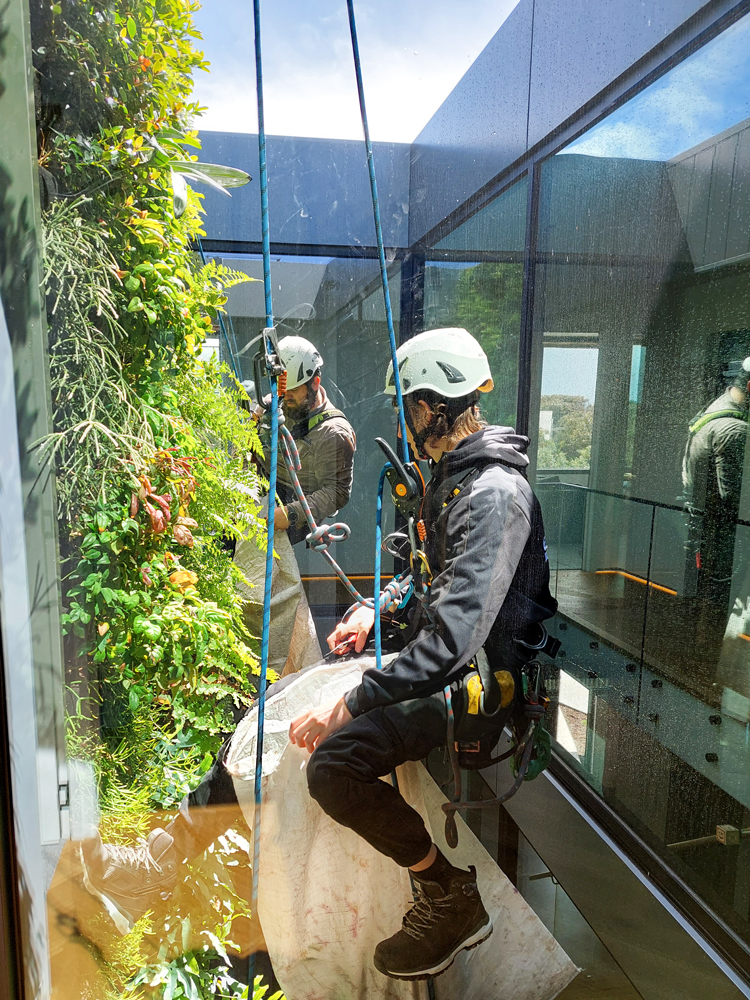
The Art of Stewardship: Ecological Resilience and Maintenance
In the pursuit of convenience, the term "low-maintenance" has become a pervasive, and often misleading, marketing slogan. A living asset does not thrive on neglect.
Fytogreen offers a different philosophy: that of proactive maintenance, or professional horticultural stewardship.
Designing for Pest and Disease Resilience
Ecological design is our first line of defence against pests and disease. A diverse, healthy plant community is inherently more resilient than a monoculture. By distributing stressors across a wide range of species, we reduce the load on any single plant, making the entire system less vulnerable.
Pests and diseases are often indicators of an underlying imbalance or stress. Our approach is to maintain the health of the ecosystem as a whole, rather than simply reacting to symptoms with chemical treatments. Expert Stewardship for Enduring Health Our commitment to this principle begins in the design phase, engineering systems for efficient care. This is backed by our standard 1-year Defects Liability (DL) period.
Fytogreens' dedicated maintenance department is a core pillar of our service. It is staffed by expert horticulturists who are intimately familiar with our systems, they provide the specialised care required to ensure our gardens not only survive but flourish, increasing in beauty and value over time.
The Human Benefit: Property, Wellbeing, and Biophilic Design
The integration of living systems into our homes provides benefits that extend far beyond the building's physical performance. The concept of biophilia hinges on the fact that humans have an innate, biological need to connect with nature. Fulfilling this need has profound, measurable impacts on our health, well-being, and the perceived value of our homes.
Elevating Property Value and Market Appeal
High-quality living architecture is a signature of premium design. Properties featuring professionally installed and maintained green roofs and walls consistently command higher values in the real estate market.
They possess a unique and powerful selling proposition that distinguishes them from conventional properties. This is not just about curb appeal; it is about offering a demonstrably superior living environment. The value enhancement is so significant that it can even extend to neighbouring properties, whose own value increases due to proximity and views of a beautiful, verdant installation. For a homeowner, this represents a sound financial investment that appreciates over time.
The Tenant and Owner Experience
For those who live within the space, the daily experience is transformed. A home with integrated nature offers an enhanced sense of "liveability." These green spaces become cherished amenities—a place for quiet contemplation on a roof terrace, a calming natural backdrop viewed from a living room window. This direct, daily connection to a dynamic, living system enriches life, fostering a sense of place and identity. For property owners, this translates into higher tenant satisfaction and retention, as residents are more likely to value and remain in a home that actively contributes to their quality of life.
Biophilia and Human Health
The health benefits of exposure to nature are well-documented and scientifically validated. Visual access to green spaces triggers a positive biophilic response, measurably reducing stress by lowering cortisol levels, regulating heart rate, and improving concentration. In an increasingly urbanised world, the home becomes a critical sanctuary. By bringing a functioning ecosystem into the residential environment, we are providing a powerful antidote to the stresses of modern life.
This is not a luxury; it is a fundamental component of designing healthy buildings and healthy lives.
Conclusion: An Enduring Green Installation
Bringing nature home is an opportunity to create something of lasting value. A residential roof garden or green wall should be an enduring feature and a testament to quality design.
The Fytogreen approach is a holistic one, integrating advanced technology, soil science, commercial-grade precision, and deep botanical and ecological expertise. We believe that true value lies in the long-term performance, resilience, and ecological function of the final creation. By choosing a system engineered for success, you are investing in a healthier, more beautiful, and more sustainable way of living. You are choosing to cultivate a home that is not just built, but truly alive.
